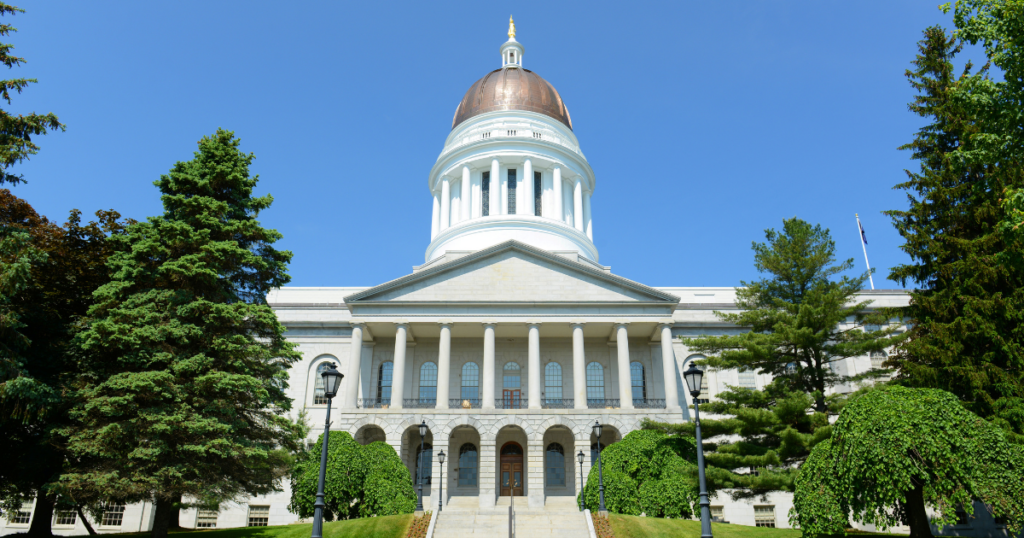On January 10, Governor Janet Mills unveiled her budget plans for Maine through 2027. While the proposal balances the budget through some revenue increases, it largely relies on cuts to previous commitments, impacting vulnerable Mainers and low wage workers while letting the rich and big corporations — whose wealth largely surged during the pandemic — off the hook. Here’s a breakdown:
Supplemental budget (FY 2025)
Maine is projected to bring in an additional $260 million in revenue beyond what was originally budgeted for the current fiscal year which ends on June 30, 2025. At the same time, there are unanticipated costs. The Governor’s supplemental budget proposal addresses these to balance the state budget for the remainder of fiscal year 2025.
Additional spending
- $118 million for MaineCare to support increased health care enrollment post-pandemic
- $7.3 million to account for extra enrollment the Free Community College program
- $8 million for disaster relief following last year’s severe winter storms
Biennial budget (FY 2026-2027)
The governor’s budget proposal for the next two fiscal years, covering July 1, 2025 to June 30, 2027 allocates significant funding to pay for existing programs but fails to make good on prior commitments for other programs. It relies on a mix of new revenue raisers, cuts, and one-time funding shifts to balance the budget. By instead centering tax fairness in raising revenue and making wealthy individuals and large corporations pay their fair share, there is an opportunity to deliver a budget that honors existing commitments, avoids harmful cuts, and provides more stable long-term funding.
New spending and investments
- $194 million for increased MaineCare enrollment and usage costs
- $35 million to cover reduced federal contributions to MaineCare resulting from annual adjustments based on Maine’s improved economy
- $157 million to sustain the state’s 55% education funding commitment
- $25 million to make Free Community College permanent
- $29 million to offset inflationary costs for the University of Maine System and limit the need for tuition increases
Cuts and delayed promises
Health care cuts:
- Freezes cost-of-living increases for health care providers that would cost $132 million over two years — this will reduce wages for direct care workers by up to $1,690 annually by 2027 and make it harder to find workers for these jobs
- Limits MaineCare payments for hospital-affiliated facilities ($6.9 million), ends plans to make pharmacy services more available at low-cost clinics ($4.2 million), and cuts rewards for hiring psychiatric medication professionals ($3 million)
Workforce reductions:
- Increases state workforce attrition from 1.6% to 5%, conserving $44 million — this will worsen understaffing of state agencies and impact the availability and quality of public services for Mainers
Childcare funding:
- Cuts $30 million from childcare worker stipends — this will reduce the average earnings for nearly 7,500 child care workers by $4,000 over two years
- Reduces Head Start funding by $7 million
- Cancels a $5 million scholarship program that helps child care workers pay for care for their own children
Safety net cuts:
- Cuts $8 million of food assistance, ending support for asylum seekers with work permits who are still looking for a job
- Limits General Assistance housing help
Public health and crisis response:
- $31 million shifted from the Fund for a Healthy Maine to the General Fund, acknowledging declining cigarette sales and effectively undercutting public health measures called for by a commission on the fund’s future
- Cuts plans for $6 million of additional mental health crisis centers and law enforcement liaisons conceived after the 2023 mass shooting in Lewiston
The items listed here reflect some of the larger cuts contained in the governor’s budget proposal. There are other cuts not identified here that will have significant impacts on different groups of Maine people.
Key proposals for revenue generation
- Nicotine tax: Increase cigarette tax from $2 to $3 per pack, and raise taxes on other nicotine products, bringing in $80 million over two years
- Cannabis tax: Increases tax on recreational cannabis from 10% to 14% while reducing the tax on wholesale goods resulting in an additional $6 million over two years
- Pension tax changes: Limits deductions for individual retirees earning over $100,000 or couples making more than $200,000, generating $43 million over two years
- New tax applications:
-
- Sales tax on streaming services ($13 million)
-
- Tax on pharmacy prescriptions ($11 million)
-
- Ambulance provider tax ($3.6 million)
- One-time funds:
-
- $45 million from the Education Stabilization Fund
-
- $42 million in interest from federal American Rescue Plan Act aid
-
- $10 million redirected from the Real Estate Transfer Tax, affecting affordable housing funds
Recommendations for a fairer approach
Instead of relying on cuts, Maine can avoid harmful reductions that result in lower wages for already underpaid and undervalued workers by asking the wealthiest residents to pay their fair share in taxes. Specific options include:
- Creating a “millionaire’s tax” to raise over $200 million next biennium
- Raising the real estate transfer tax on higher priced homes to raise tens of millions of dollars per year
- Increasing the corporate income tax to raise close to $100 million per year
- Ending ineffective subsidies for wealthy corporations to raise over $100 million per year
- Increasing taxes on capital gains to raise almost $120 million per year
Why Tax Fairness matters
- It’s sustainable and targeted. By comparison, money made from tobacco taxes — the primary source of new revenue in the Governor’s proposal — dropped by a third when adjusted for inflation between 2006 and 2019.
- Raising taxes on the richest Mainers could generate hundreds of millions of dollars and continue to grow as our economy grows.
- This approach would protect critical services, strengthen the workforce, and better support Maine’s vulnerable populations.
- Maine’s tax code should ask more of those who benefit most from our economy and the hard work of every day Mainers, not its most vulnerable who are struggling.
By centering tax fairness, Maine can fill its budget gap, avoid cuts, and build a more equitable future.




